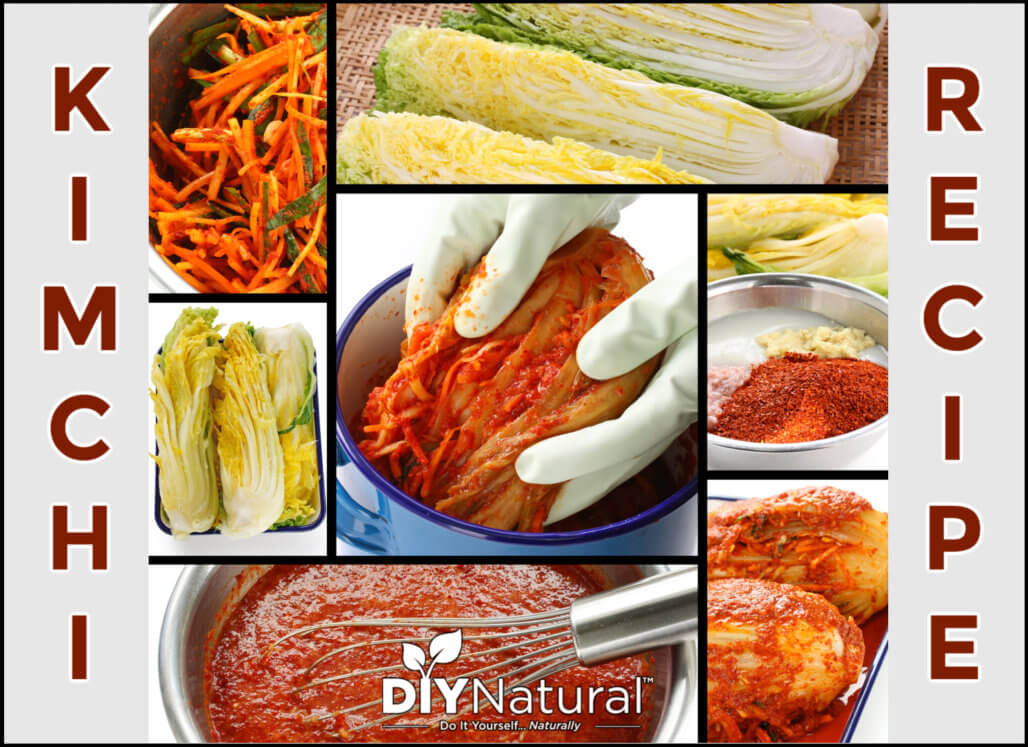

Learning how to make kimchi is a simple and fun process. This Kimchi recipe includes sweet pears but you can adjust it to match your tastes.
I love watching cooking shows and one of my favorites is Chopped. The chefs get a basket with four mystery ingredients and, in 30 minutes, have to create a dish using those ingredients. One of the things I see people make over and over is kimchi. It’s is a fermented Asian condiment that is rich in probiotics. Want to learn more? Read on!
How to Make a Kimchi Recipe
Kimchi is traditionally made from cabbage and hot sauce. Your ferment it, so the end product has more probiotics than you need in a day. Wait! More than enough? There’s never enough!
Some of the other ingredients that go into this Korean condiment are carrots, radish, garlic chives, and Asian pears. I would never have thought to put sweet pears in a vegetable dish, but this adds a nice subtle taste to the mix.
-
2
heads
napa cabbage
(chopped) -
1
head
green or purple cabbage
(chopped) -
1
cup
green onions
(sliced) -
2
cups
carrots
(shredded) -
1
Tbsp
ginger
(minced) -
2
tsp
garlic
(grated) -
1 large daikon radish
(shredded) -
1
large Asian Pear
(shredded) -
1
Tbsp
soy sauce
(or ponzu) -
1
Tbsp
red pepper flakes -
1/4
cup
Gochujang -
1/2
gallon
water -
2
cups
salt
-
This kimchi recipe begins by mixing the salt with the water, stirring to dissolve. Now just add the cabbage and marinate it overnight.
-
The next morning, strain the cabbage and rinse well. You want to remove all of the salt. Let sit in a colander for a few minutes to drip the rest of the moisture out of it.
-
On a large bowl, mix all of the rest of the ingredients. I use gloves and really get my hands in there. All of the cabbage needs to be coated with hot sauce.
-
Place the kimchi in jars and tighten the lid. Be sure to leave about a half-inch of headspace at the top. Kimchi tends to release gasses as it ferments. Let this sit on the counter for about 3 days. I “burp” the lids every day to prevent blowouts. I have not had a jar break, but the fear is real! You can also use these fermenting lids.
READ RELATED: How to Fix ‘Ad Serving Has been Limited’ on Google AdSense
-
After three days, test your kimchi recipe. You can leave it a bit longer to make it sourer or add more pepper flakes to increase the heat. I like to add some cucumber or zucchini at this point. I find that if I add it too soon, that it can get mushy.
This is my base kimchi recipe; feel free to vary the ingredients to suit your tastes.
Other vegetables that you can use are sweet potatoes, dinner radish, green beans, parsnips, turnips, sunchokes, or bamboo shoots. Fragile produce like tomatoes will turn to mush as well, so I avoid them.
I will sometimes take a few strands of lemongrass and tie them together, then leave them in the ferment. This imparts a nice lemony flavor.
Serving: 4ounces | Calories: 933kcal | Carbohydrates: 211g | Protein: 45g | Fat: 7g | Saturated Fat: 2g | Sodium: 228184mg | Potassium: 8443mg | Fiber: 69g | Sugar: 102g | Vitamin A: 52931IU | Vitamin C: 947mg | Calcium: 2266mg | Iron: 18mg
Making Adjustments
That’s it! I had no idea making a kimchi recipe would be so easy.
And adjusting the levels of heat and sourness is also simple. Why not make some today?
*******
Source: DIY Natural – Food





